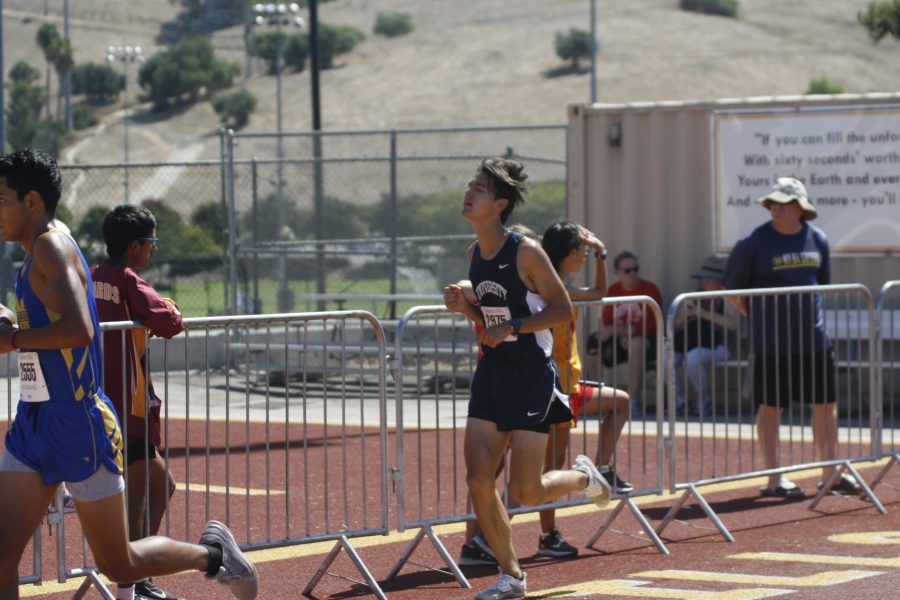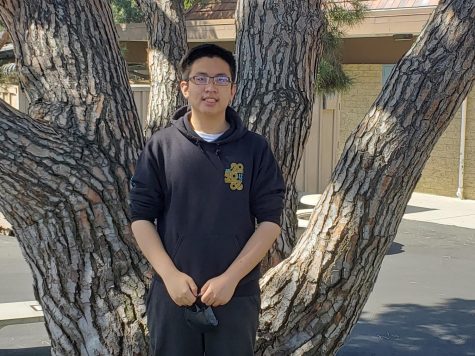An Overview of Reopening UHS Cross Country Meets
March 10, 2021
To combine all three sports seasons for the 2020-2021 school year, the California Interscholastic Federation-Southern Section (CIF-SS) decided to condense the Fall, Winter, and Spring activities into two sports seasons. This meant that for sports like Cross Country, which coaches Eric Davies and Courtney Mosey led, the contests would begin as early as January 25 and end on March 27 with restrictive guidelines.
Additionally, CIF greenlighted cross country competitions to occur as long as schools comply with IUSD’s COVID-19 modifications, which outlined changes to group size, exercise routines, and face mask etiquette during every meeting. The first meet for our UHS team under CIF regulations would occur on Saturday, February 6. Unfortunately for the runners, there is also another caveat:
“Because of this change [in meet-up dates from January 1st to January 25th], we have started holding practices five days a week as opposed to two days a week,” said Davies and Mosey in a joint letter to the team. “When athletes are running only two days a week, it is simply not enough to prepare for a three-mile cross country race.”
Without consistent practices, running only twice a week would increase the chance of injury and leave the UHS runners inadequately trained for future competitions. These new exercise schedules promote measures that will help alleviate this issue of meeting up to competition standards. However, since the schedule also increases exposure opportunities, runners would be allowed to voice their concerns about the change in practices by contacting their respective coaches online.
“I just hope our meet-up follows the COVID-19 guidelines and lives up to the feeling of a real season,” senior Varsity Cross Country runner John Melcher said. “I thought our team was going to be deprived of this season so obviously, I am pleased about that but at the same time, the team is still restricted in many ways.”
Following Melcher’s sentiments about restrictions, CIF has specifically mandated that groups of at most 10 runners must be maintained per “pod”. The runners will be advised to remain six feet apart, run in single file lines, and avoid grouping at the start and finish lines to help bolster contact tracing efforts. For intense aerobic exercises or strenuous cardiovascular activities, athletes may also be allowed to loop (cut and modify) masks for breathability and maintain at least 10 feet of physical distance between themselves.
While these guidelines are meant to preserve physical safety within cross country competitions, it also means that not all runners will be able to participate. For the Saturday meet against Beckman High School, only one of these pods is allowed to race from both schools’ divisions. Because of the short notice of the meets as well, some members of the cross country team have expressed other worries about returning to the run:
“All of us on the team were expecting our season to be canceled so a lot of us got out of shape during the off-season grace period,” Melcher said. “Our team needs to get back into it as soon as our season progresses, even if that means exercising more frequently and adhering to safety rules.”
For one previous runner who did not rejoin his cross country team this year, his story poses another considerable insight regarding personal safety and inter-school difficulties. It reflects the mindset of some formerly involved athletes who felt that their presence on the field would disturb their own well-being and learning abilities because of the current unprecedented circumstances.
“Initially, I joined the sport last year before COVID-19 was prevalent and dropped it in the second semester when the teachers switched to an online format,” senior and former UHS Junior Varsity Cross Country runner Chami Sagara said. “What ultimately ended up making me drop was my concerns because COVID-19 cases were rising, and making it to practice every day would be difficult as I am in Irvine Virtual Academy (IVA).”
Regarding these difficulties, no singular cause determined whether or not runners have dropped the sport. Rather, it was the combination of factors involving viral protection, academic stresses, as well as personal reasons that have led athletes like Sagara to stay aside from the sport. Even with the decline in Cross Country participation because of the aforementioned factors, this Fall Season can only improve for the Trojan runners. They begin their journey to take the lead in future competitions.
“I do not know any people who dropped the sport purely because of the pandemic or for IVA reasons, but I remain confident that we would return once things start settling down,” Sagara said. “Going forward, I just hope that the team can stay safe and win for our school.”





